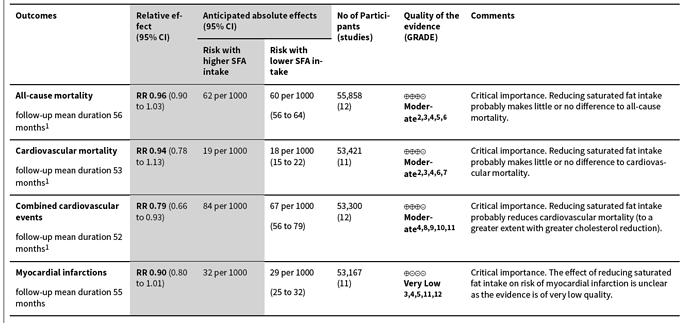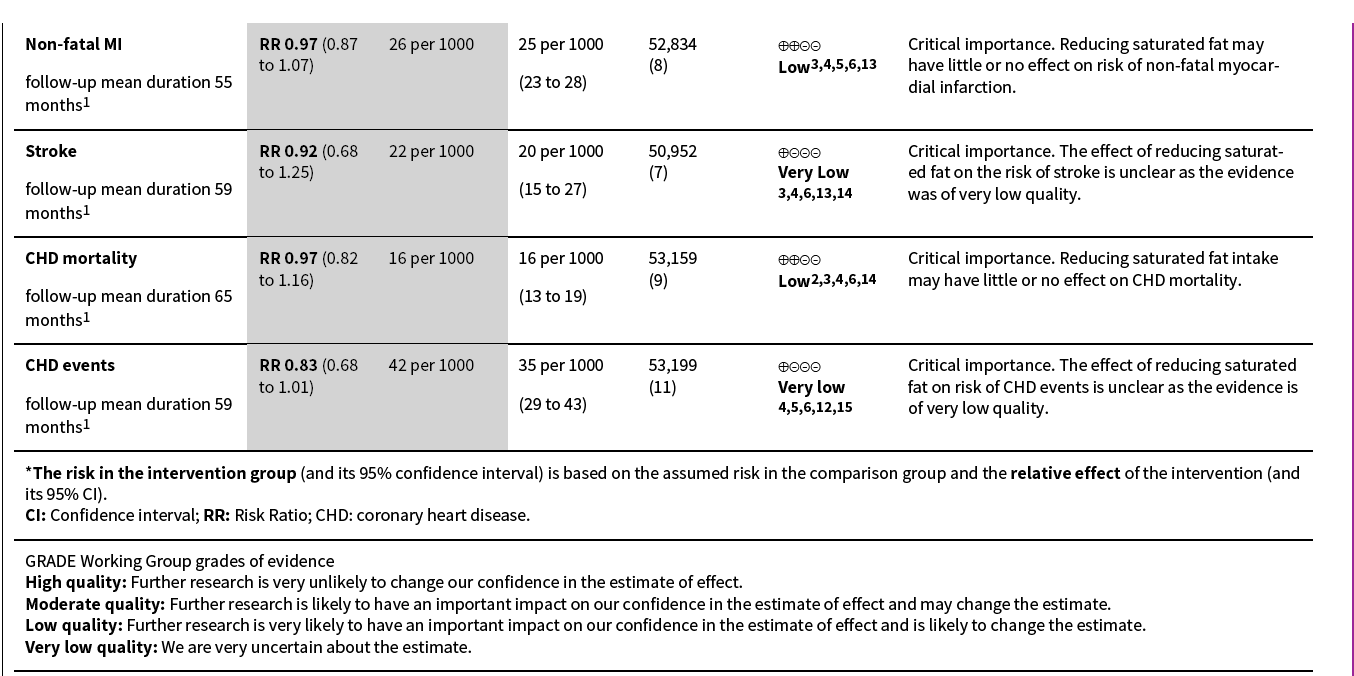In May, Cochrane updated/released this meta-study, which showed that a reduction is saturated fat led to a reduction in risk of combined cardiovascular events by 21%, but no significant reduction in
all-cause mortality or cardiovascular mortality. I generally consider Cochrane to be a fairly good source. These results, which seem neutral at best (all-cause mortality findings), and contradicory to other low carb studies at worst (cardiovascular events findings) are a bit surprising.
Hoping that someone here who is more skilled in parsing study results has some insights.
https://pubmed.ncbi.nlm.nih.gov/32428300/
Thanks, Mike





